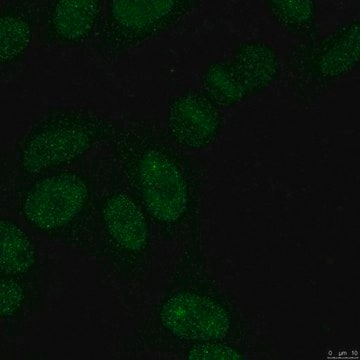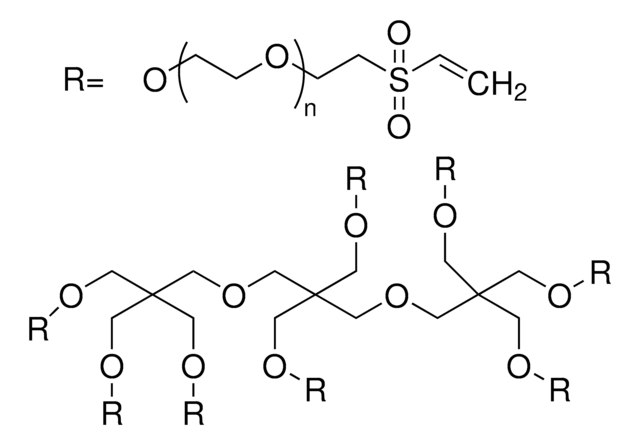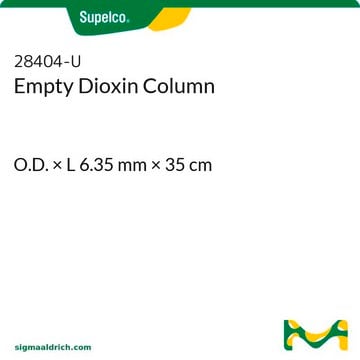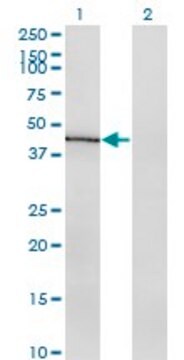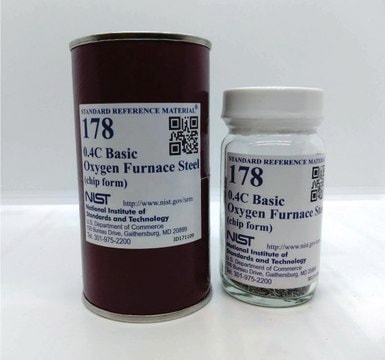MABS1139
Anti-SUMO2/3 Antibody, clone 3H12
clone 3H12, from rat
Sinónimos:
Small ubiquitin-related modifier 2, HSMT3, Sentrin-2, SMT3 homolog 2, Smt3B, SUMO-2, Ubiquitin-like protein SMT3B, Small ubiquitin-related modifier 3, SMT3 homolog 1, Smt3A, SUMO-3, Ubiquitin-like protein SMT3A
Seleccione un Tamaño
About This Item
Productos recomendados
origen biológico
rat
Nivel de calidad
forma del anticuerpo
unpurified
tipo de anticuerpo
primary antibodies
clon
3H12, monoclonal
reactividad de especies
mouse, human, rat
técnicas
immunocytochemistry: suitable
western blot: suitable
isotipo
IgG2aκ
Condiciones de envío
dry ice
modificación del objetivo postraduccional
unmodified
Información sobre el gen
human ... SUMO2(6613)
Descripción general
Especificidad
Inmunógeno
Aplicación
Immunocytochemistry Analysis: 10 µg/mL of purified clone 3H12 detected SUMO2/3 immunoreactivity in primary mouse neural progenitor cells (Courtesy of Taro Tachibana, Ph.D., Osaka City University, Japan).
Western Blotting Analysis: 1 µg/mL of purified clone 3H12 detected SUMOylated proteins in HeLa cell lysate (Courtesy of Taro Tachibana, Ph.D., Osaka City University, Japan).
Immunocytochemistry Analysis: A representative lot detected SUMO-2/3 nuclear immunoreactive foci co-localized with those of MCAF1 and SUMO1 and enriched in heterochromatin proteins by indirect immunofluorescent staining of exponentially growing C-33A cells fixed with 4% paraformaldehyde and permeabilized by 0.2% Triton X-100. Trasfecting C-33A cells with SUMO2/3 shRNA or Discosoma sp. red fluorescent protein (DsRed) fusion containg SUMO2/3-interacting sequence (MCAF1 a.a. 965-975) abolished nuclear staining by clone 3H12 (Uchimura, Y., et al. (2006). J. Biol. Chem. 281(32):23180-23190).
Signaling
Calidad
Western Blotting Analysis: A 1:500 dilution of this hybridoma culture supernatant detected SUMO2/3-modified (SUMOylated) proteins in 10 µg of HeLa cell lysate.
Descripción de destino
Forma física
Almacenamiento y estabilidad
Handling Recommendations: Upon receipt and prior to removing the cap, centrifuge the vial and gently mix the solution. Aliquot into microcentrifuge tubes and store at -20°C. Avoid repeated freeze/thaw cycles, which may damage IgG and affect product performance.
Otras notas
Cláusula de descargo de responsabilidad
¿No encuentra el producto adecuado?
Pruebe nuestro Herramienta de selección de productos.
Código de clase de almacenamiento
10 - Combustible liquids
Clase de riesgo para el agua (WGK)
WGK 2
Certificados de análisis (COA)
Busque Certificados de análisis (COA) introduciendo el número de lote del producto. Los números de lote se encuentran en la etiqueta del producto después de las palabras «Lot» o «Batch»
¿Ya tiene este producto?
Encuentre la documentación para los productos que ha comprado recientemente en la Biblioteca de documentos.
Active Filters
Nuestro equipo de científicos tiene experiencia en todas las áreas de investigación: Ciencias de la vida, Ciencia de los materiales, Síntesis química, Cromatografía, Analítica y muchas otras.
Póngase en contacto con el Servicio técnico